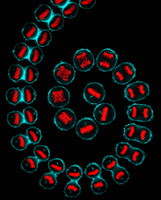Apparently, Scientific Reports has sent out emails to their
editorial board members about an upcoming trial for a new peer-review track.
The email is available this link for now. According to the email: "a
selection of authors submitting a biology manuscript to Scientific Reports will
be able to opt-in to a fast-track peer-review service at an additional
cost"
They claim that this service will speed up the response time
and they commit to have the editorial decision and peer-review comments in 3
weeks from submission. To do this, they will partner with Research Square that
offers a third-party peer-review system called Rubriq. This service has been
previously covered in the news by The Economist and Nature. Rubriq appears to
be essentially a web-based reviewing platform. Scientists can register on the
system and get matched to submitted articles. Reviewing is paid on a
per-article basis. The process is described well in their website and they have
online an example report.
Some of the reactions to this partnership have been
negative. See for example this twitter thread. One of the negative comments
appears to be that Scientific Reports is trying to sell a fast track on top of
their existing peer-review track. I honestly think this was just a bad PR move
and the wrong focus on their email to editors. I assume Scientific Reports is
working like PLOS ONE with many academic editors and academic reviewers that
are not paid at all. They still need some editorial staff to make sure the
papers move along the process which is what probably costs them money. Rubriq
is currently charging $500-$650 per article although I assume they might have
some cheaper deal with Scientific Reports for this trial. If this trial works
out I can imagine that Scientific Reports could cut down on costs per paper
significantly but in the long run unbundled peer review would probably actually
hurt them. If peer-reviewing is external
and editorial decisions are based on scientific soundness then the journal
becomes just a branded specialized blogging platform.
With the bad PR paid "fast-track" notion out of
the way I think that the best discussion is really about the merit of
unbundling peer review. What I don't like about it is that it sounds like
Amazon Turk for peer review. I don't review articles because I get paid to do
it. However, if I needed to make a living out of it I would not reject so many
requests as I do now. I think Rubriq is currently paying $100 per referee
report which, for now, is just an extra incentive. This extra incentive is
apparently still very important has Rubriq found out when running a survey. If
we imagine this sort of marketplace scaling up we would need to have some
assurance that professional reviewing was up to some required standard. How do
we define and evaluate these standards is really worth thinking about.
The positive aspects of third party peer review should be
clear to anyone that has gone through the process. There is so much time wasted
from having the same paper re-submitted to several different journals and
getting reviewed by a different set of reviewers each time. Having the
evaluation of the soundness and merit of research separate from dissemination
would be a clear innovation in the scientific process. This would also make the
publishing costs more transparent and probably would result in lower prices.
So, overall I think it is great the Scientific Reports is
doing this trial. Many people have talked about third party peer review and
paid peer review. We do want more transparency about the costs of publishing.
Maybe it turns out that Amazon Turk for peer review is a bad model but if we
don't try new things we won’t find out.

















